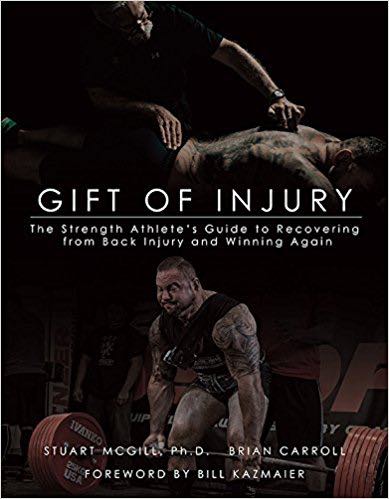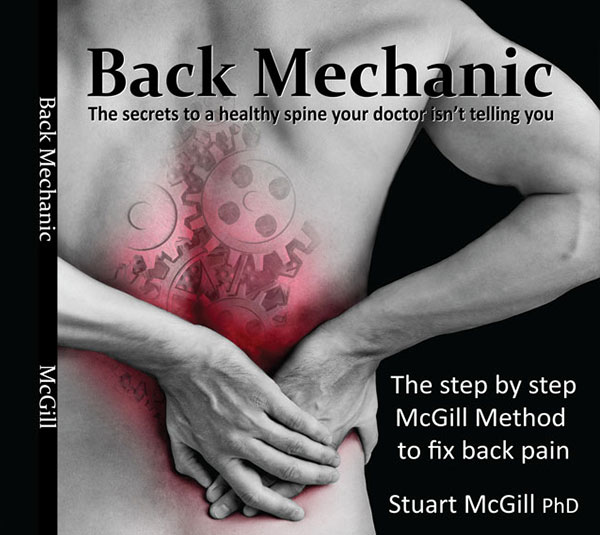12 Sep When Back Pain Isn’t Just Your Back: A Conversation with Dr. Lysander Jim
Article Rundown
- Dr. Lysander Jim connects spine health with chronic inflammation and hidden illnesses like Lyme disease.
- Unexplained back pain can sometimes signal underlying immune or inflammatory issues.
- Chronic pain doesn’t just hurt the body — it can actually change brain structure and function.
- Collaboration between biomechanical coaching and medical insight leads to a more complete recovery.
Two Worlds Colliding
One of the things I love about the “Gift of Injury” project and the work we do through PowerRackStrength is bringing together experts from different fields who care about the same mission: helping people get out of pain and back to performing at their best. That’s exactly why I sat down with Dr. Lysander Jim, a physician based in Beverly Hills who has spent the last several years working with patients dealing with spine pathology, chronic inflammation, and what many people would call “mystery illnesses.”
Dr. Jim explained that while a significant portion of his practice is devoted to spinal curves and related issues, most of his patients come to him with environmentally related illnesses — especially mold exposure — or symptoms that other doctors haven’t been able to explain. “It kind of fluctuates,” he told me. “But I’ve gained a bit of a reputation for figuring out these unexplained symptoms and conditions.”
When Pain Doesn’t Add Up
As a lifter and coach, I know the usual timelines of recovery from injuries like disc bulges. Often, after six to eight months, the body adapts and symptoms should calm down. But as Dr. Jim pointed out, sometimes things don’t line up.
“We’ll have a client where the imaging shows a disc bulge that should be winding down, or maybe a little bit of facet irritation,” he said. “But they’re still having pain that’s out of proportion to what we’d expect.”
That’s when Dr. Jim started noticing a pattern: some of these patients weren’t just dealing with a spine injury — they were also dealing with systemic inflammation from underlying conditions like Lyme disease.
Lyme Disease, Inflammation, and Recovery
Lyme disease, as Dr. Jim explained, is most commonly transmitted through tick bites. The tricky part? The ticks that carry it are often so small that people don’t even realize they’ve been bitten. He added that there are also theories about in-utero and even sexual transmission, though tick exposure is still the most recognized cause.
What makes Lyme so problematic is how it interacts with the body. “These bacteria literally eat their way into tissues,” Dr. Jim said. “That’s why so many patients complain of knee pain. On top of that, it triggers a massive inflammatory response. So any injury you already have — like a disc issue — is going to hurt worse, heal slower, or maybe not heal at all.”
He shared a case where a patient with a disc bulge should have been recovering, but every small misstep sent pain shooting from the spine all the way up to the head. “That kind of symptom doesn’t fit the usual mechanical pattern. That’s when you start to suspect something deeper — a chronic infection or an immune system issue.”
Once those patients were tested, Lyme disease was confirmed. From there, Dr. Jim referred them to Lyme-literate physicians who could address the root cause. Only after that underlying inflammation was managed did the biomechanical interventions — things like spine hygiene, proper movement, and targeted coaching — start to really take hold.
Chronic Inflammation: The Silent Roadblock
One of the most powerful takeaways from our conversation was just how destructive chronic inflammation can be. It isn’t always obvious, and it doesn’t follow the same rules as normal recovery. You might think you’re healing from a back injury, but if you’ve got something like mold exposure or Lyme driving systemic inflammation, you’re fighting a losing battle.
“Sometimes people can sort things out with the right postures, movements, and spine hygiene,” Dr. Jim explained. “But if the immune system is suppressed or constantly inflamed, tissues heal more slowly — or they don’t heal at all. That’s when pain becomes chronic.”
I’ve lived this reality myself. Back when I was chasing my all-time world record squat of 1,306 pounds, I thought I could simply outwork the pain. But eventually, I reached the point where my body completely shut down. I couldn’t even unrack my opener at a meet. That’s when I realized it’s not just about training harder — it’s about respecting recovery, managing stress, and addressing the underlying causes of pain.
The Brain on Pain
One of the more fascinating parts of our talk was when Dr. Jim explained how chronic back pain can actually change the brain. Researchers studying brain volume have found measurable thinning in certain areas of the cortex in people with long-term pain.
“People with chronic back pain often feel slower, more irritable, more fatigued,” he said. “And it’s not just in their head. Volumetric studies show that the gray matter — the outer layer of the brain — can thin in specific patterns. What’s really interesting is that when patients get the right treatment, and the pain is resolved, the brain can actually restore some of that lost volume.”
Think about that for a second. Pain doesn’t just live in your back. It changes how your brain functions, how you think, how you feel, and even who you are day-to-day. That’s why it’s so important to get to the bottom of what’s really causing pain rather than masking symptoms or assuming it will simply fade.
Pattern Recognition and the Human Side of Healing
When I asked Dr. Jim how he manages the overwhelming complexity of pain — with its seemingly unlimited causes — his answer was telling. “Yes, there are infinite ways people can end up in pain,” he said. “But if you categorize things, it becomes manageable. With the training we get from BackFitPro, we’re able to use touch, observation, and physical testing to understand the biomechanical side. Then, looking through the lens of inflammation and immune health, you start to recognize patterns. The more cases you’ve been privileged to see, the more effective you can be at helping people.”
That really hit me. As a coach, I’ve had my fair share of athletes with unique presentations. Sometimes the solution is simple: fix their mechanics, teach them how to move better, and they’re back on track. But other times, it feels like you’re peeling an onion — uncovering layer after layer of stressors, injuries, and hidden issues like inflammation or illness. That’s where collaboration with experts like Dr. Jim makes all the difference.
Final Thoughts
Chronic pain isn’t always just about the spine. Sometimes it’s inflammation. Sometimes it’s an infection. Sometimes it’s a combination of mechanical and biological factors that creates a storm the body struggles to calm on its own.
The key lesson? Respect the process, recognize the patterns, and never assume someone’s pain is “all in their head.” The nervous system, the immune system, and the musculoskeletal system are all connected. The more we can bring together experts across fields, the better we can help people find relief, rebuild resilience, and return to doing the things they love.
This conversation with Dr. Lysander Jim was a powerful reminder that healing takes both precision and compassion. If you’re an athlete, coach, or clinician dealing with pain or helping others through it, you won’t want to miss the full discussion.












Sorry, the comment form is closed at this time.